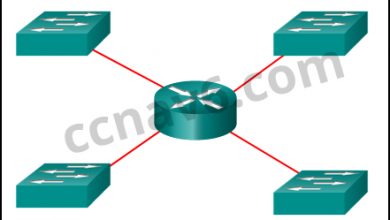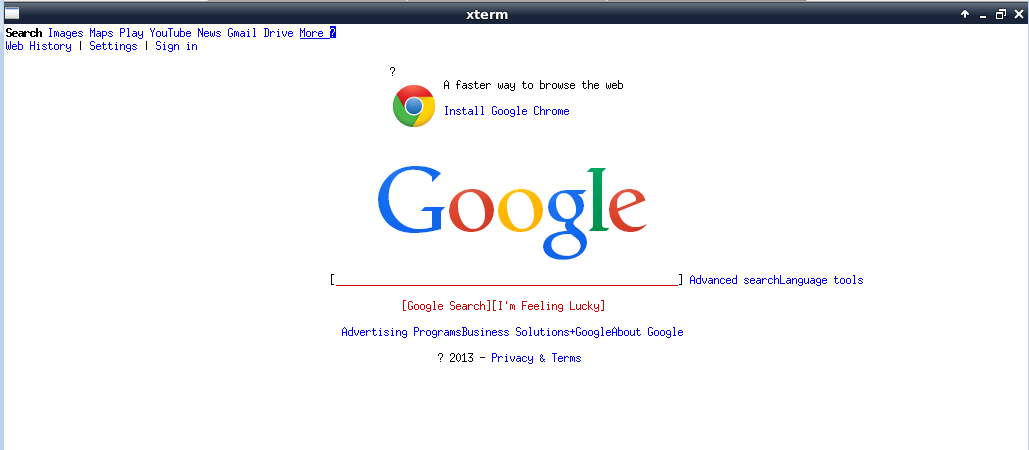Uncategorized
CCNA 1 VERSION 5.1 CHAPTER 7 EXAM ANSWERS 2016 (100%)
CCNA 1 Chapter 7
- What are two types of IPv6 unicast addresses? (Choose two.)
- multicast
- loopback
- link-local
- anycast
- broadcast
- What does the IP address 172.17.4.250/24 represent?
- network address
- multicast address
- host address
- broadcast address
- What is the purpose of the subnet mask in conjunction with an IP address?
- to uniquely identify a host on a network
- to identify whether the address is public or private
- to determine the subnet to which the host belongs
- to mask the IP address to outsiders
- What subnet mask is represented by the slash notation /20?
- 255.255.255.248
- 255.255.224.0
- 255.255.240.0
- 255.255.255.0
- 255.255.255.192
- A message is sent to all hosts on a remote network. Which type of message is it?
- limited broadcast
- multicast
- directed broadcast
- unicast
- What are three characteristics of multicast transmission? (Choose three.)
- The source address of a multicast transmission is in the range of 224.0.0.0 to 224.0.0.255.
- A single packet can be sent to a group of hosts.
- Multicast transmission can be used by routers to exchange routing information.
- The range of 224.0.0.0 to 224.0.0.255 is reserved to reach multicast groups on a local network.
- Computers use multicast transmission to request IPv4 addresses.
- Multicast messages map lower layer addresses to upper layer addresses.
- Which three IP addresses are private ? (Choose three.)
- 10.1.1.1
- 172.32.5.2
- 192.167.10.10
- 172.16.4.4
- 192.168.5.5
- 224.6.6.6
- How many bits are in an IPv4 address?
- 32
- 64
- 128
- 256
- Which two parts are components of an IPv4 address? (Choose two.)
- subnet portion
- network portion
- logical portion
- host portion
- physical portion
- broadcast portion
- Which two IPv4 to IPv6 transition techniques manage the interconnection of IPv6 domains? (Choose two.)
- trunking
- dual stack
- encapsulation
- tunneling
- multiplexing
- Which of these addresses is the shortest abbreviation for the IP address:
3FFE : 1044 : 0000 : 0000 : 00AB : 0000 : 0000 : 0057?- 3FFE : 1044 :: AB :: 57
- 3FFE : 1044 :: 00AB :: 0057
- 3FFE : 1044 : 0 : 0 : AB :: 57
- 3FFE : 1044 : 0 : 0 : 00AB :: 0057
- 3FFE : 1044 : 0000 : 0000 : 00AB :: 57
- 3FFE : 1044 : 0000 : 0000 : 00AB :: 0057
- What type of address is automatically assigned to an interface when IPv6 is enabled on that interface?
- global unicast
- link-local
- loopback
- unique local
- What are three parts of an IPv6 global unicast address? (Choose three.)
- an interface ID that is used to identify the local network for a particular host
- a global routing prefix that is used to identify the network portion of the address that has been provided by an ISP
- a subnet ID that is used to identify networks inside of the local enterprise site
- a global routing prefix that is used to identify the portion of the network address provided by a local administrator
- an interface ID that is used to identify the local host on the network
- An administrator wants to configure hosts to automatically assign IPv6 addresses to themselves by the use of Router Advertisement messages, but also to obtain the DNS server address from a DHCPv6 server. Which address assignment method should be configured?
- SLAAC
- stateless DHCPv6
- stateful DHCPv6
- RA and EUI-64
- Which protocol supports Stateless Address Autoconfiguration (SLAAC) for dynamic assignment of IPv6 addresses to a host?
- ARPv6
- DHCPv6
- ICMPv6
- UDP
- Which two things can be determined by using the ping command? (Choose two.)
- the number of routers between the source and destination device
- the IP address of the router nearest the destination device
- the average time it takes a packet to reach the destination and for the response to return to the source
- the destination device is reachable through the network
- the average time it takes each router in the path between source and destination to respond
- What is the purpose of ICMP messages?
- to inform routers about network topology changes
- to ensure the delivery of an IP packet
- to provide feedback of IP packet transmissions
- to monitor the process of a domain name to IP address resolution
- What is indicated by a successful ping to the ::1 IPv6 address?
- The host is cabled properly.
- The default gateway address is correctly configured.
- All hosts on the local link are available.
- The link-local address is correctly configured.
- IP is properly installed on the host.
- A user is executing a tracert to a remote device. At what point would a router, which is in the path to the destination device, stop forwarding the packet?
- when the router receives an ICMP Time Exceeded message
- when the RTT value reaches zero
- when the host responds with an ICMP Echo Reply message
- when the value in the TTL field reaches zero
- when the values of both the Echo Request and Echo Reply messages reach zero
- What field content is used by ICMPv6 to determine that a packet has expired?
- TTL field
- CRC field
- Hop Limit field
- Time Exceeded field
- Fill in the blank.
The decimal equivalent of the binary number 10010101 is 149 . - Fill in the blank.
The binary equivalent of the decimal number 232 is 11101000 - Fill in the blank.
What is the decimal equivalent of the hex number 0x3F? 63 - Match each description with an appropriate IP address. (Not all options are used.)
- Question

- Answer

- Question


